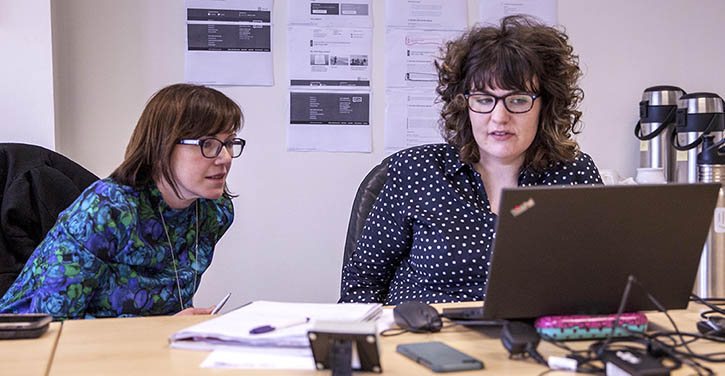Published by Jen Davis, Digital Content Executive

We’ve written about the importance of content design and why we care. Now it’s time to break this down further and focus on one way we put our users first - pair writing.
Pair programming
Pair writing isn’t new. Like most things in life, it’s adapted.
Pair programming is a common practice in agile workplaces. Generally, two developers work together on the same piece of code at the same time. One person writes the code, or ‘drives’ and the other ‘navigates’ by checking the work, offering critique and focusing on the larger picture. The idea is that two sets of eyes are better than one.
When we look at applying this to content design, the process is a little different. For us, it’s a great way to collaborate with subject matter experts (SMEs) and stakeholders within our organisation.
However, there are a lot of benefits we can share from this practice, including:
- increased collaboration
- fewer mistakes
- enhanced learning opportunities
- the increased motivation that comes from working with someone else
Pair writing
Although we are the experts when it comes to content design for our organisation, there are many things we write about that we’re not experts in. That’s when collaboration with SMEs takes place.
Sometimes, this means that the expert will write a draft content piece and we will edit and apply our content design methods to it. Other times, we’ll sit down with an SME and work on a piece of content together.
We use pair writing to provide our users with expert content that is accessible and easy to digest.
Benefits of pair writing
In her book Content Design, Sarah Richards lists the 3 main benefits of pair writing as:
- Getting more work done, faster.
- Getting content signed off faster - if your pair writing companion is the person who’s responsible for sign-off.
- Creating a more collaborative workspace, which builds trust and results in better working relationships all round.
Putting it into practice
In the HSE, we collaborate with various departments to design and publish content that communicates effectively with users. All this is underpinned by insights and analytics.
However, the stakeholders we work with are the experts in their area. We need to work with them to make sure the changes we make don’t change the meaning of the content. They also know the questions their patients and clients want information about and important advice that many people will not be aware of.
We are currently developing new online resources for pregnancy and child health. To do this, we are working closely with experts involved in the Nurture Programme - Infant Health and Wellbeing and other relevant teams. We are working with them to edit drafts of content from experts and apply our content design principles to a new body of work.
As part of the process, we ran a week-long content hackathon. During the hackathon, a GP, dietician and parenting expert joined the team to pair write a variety of articles and website resources. This meant that we could speed up the publishing process by fact checking content as we were writing.
Better content, faster
Most often, our subject matter expert is a stakeholder from within our organisation. This was the case when we were redesigning the content about medical cards. The HSE Primary Care Reimbursement Service (PCRS) are experts in the services they provide, such as the medical cards and GP card schemes. We worked with them to create user-stories to ensure that the content we are delivering is helping the user to complete the task in the easiest way possible.
When we’re designing content, we rework it to make it as accessible as possible. In this case, PCRS are subject matter experts and we are experts in making this information as user-friendly as it can be.
Content crits
A lot of the lessons we learn from pair writing are things we should carry with us, even if we’re not working with an expert outside our team. If we have a particularly challenging topic or a large-scale project, often our internal content team will have a content crit (critique). Here, we leave our feelings at the door and put on our most critical hats to give feedback on each other’s work.
The team will sit around a large screen and evaluate if the content is the best it can be. We cut out any fluff and make sure that everything in the piece is meeting a user need.
Often you’re too close to a piece of content to spot certain issues and your team will help you to iterate and improve. It’s not personal and in fact, it can be a lot of fun.
Content crits are a great way for our team to review each other’s work, ensure we are delivering a uniform style and tone and share best practice with one another.
Feedback is crucial. A second pair of eyes, or more, is always valuable. By implementing pair writing and content crits into our workflow, we strive to ensure that we are relentlessly meeting user needs.